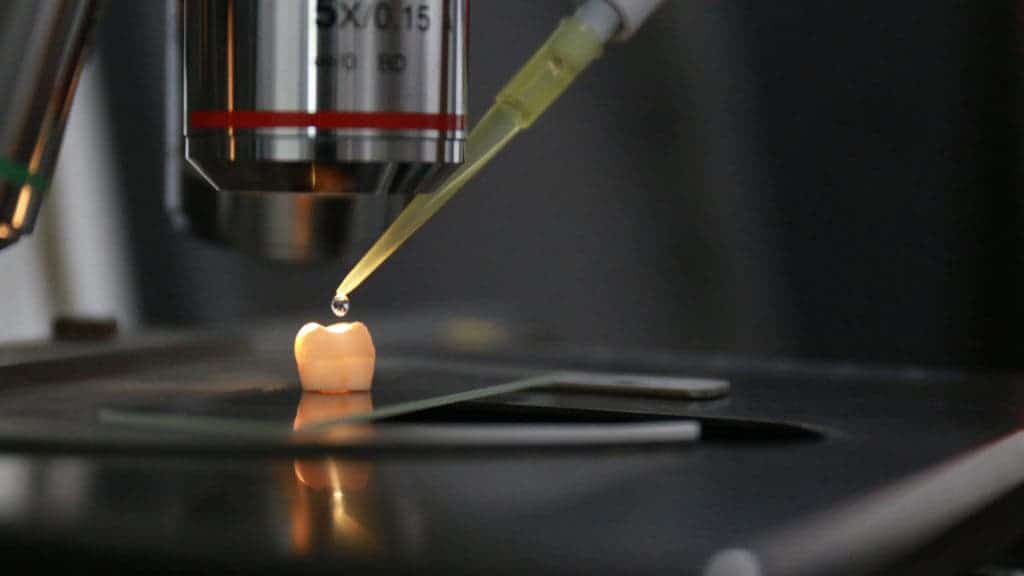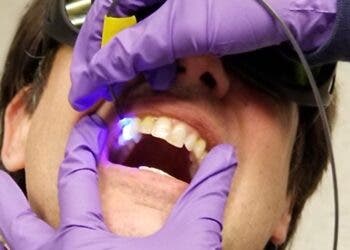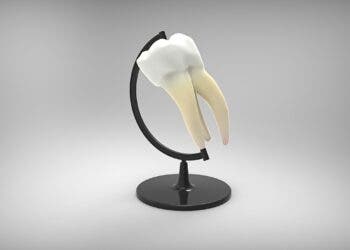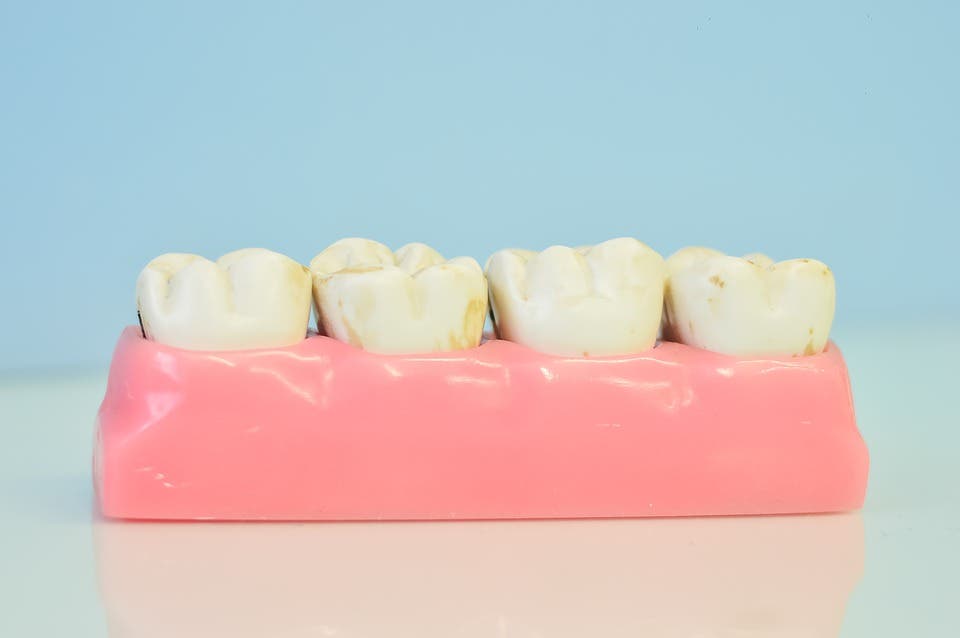
For thousands of years, humans have been battling tooth decay — and the longer we live, the worse it gets. The problem is that once our teeth lose their enamel — the hard mineralized surface of teeth — it never grows back. This is why dentists will remove the damaged enamel and fill it with a hard material that barely resembles the real thing. But not for long.
Chinese scientists at Zhejiang University and Xiamen University recently reported in the journal Science Advances that they’ve developed a special gel that can help tooth enamel repair itself.
The researchers started from clusters made of nanoparticles of calcium phosphate, the main ingredient of natural enamel. Each tiny cluster was doped with a chemical compound called triethylamine in order to prevent the clusters from clumping together.
The nanoparticles were then mixed with a gel that was applied to a sample of crystalline hydroxyapatite, a material that very closely resembles human enamel. Scanning electron microscopy revealed that the clusters created a layer that covered the sample.
The same experiment was carried out on real human teeth that had their enamel removed with acid. Within two days of application, the gel had formed a crystalline layer of approximately 2.7 micrometers. This layer had a fish-scale-like structure that closely resembles that of natural enamel. Tests also showed that the enamel substitute also had similar strength and wear resistance properties as the natural material.

This is not the first attempt at creating an enamel substitute but previous efforts could not fuse tightly with the real tooth. The new material can fuse in a single layer rather than multiple crystalline areas that can be very vulnerable to mechanical damage.
In the future, the researchers plan to carry out more tests in mice to make sure the gel has no undesirable side effects. These results are so far extremely promising, suggesting that in the future dental fillings could become obsolete.






